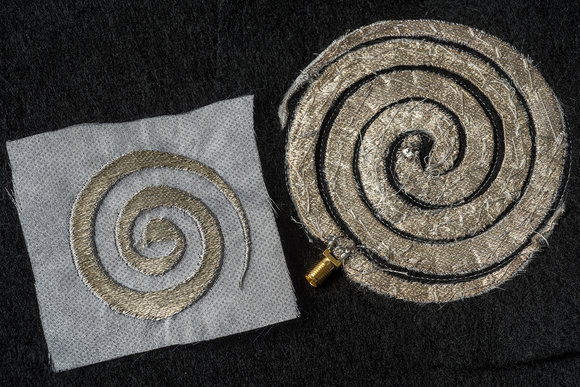What if your embroidered fancy clothes holds the ability to observe your fitness levels or improve your smartphone reception? And here, the vision does not limit to several wiring and equipment tailored inside your dress. Cheers to an innovative technique that uses ultrathin electronic thread to stitch circuits into fabric, where each embroidered antenna transmit test signals with near-perfect productivity.
The most exciting feature is its proportion, measuring just 0.1 mm in diameter. The thread encompasses seven filaments made of copper and silver. Using this advantage, researchers have discovered a mode to embroider circuits into textile with sufficient accuracy to assimilate electronic components such as sensors and memory devices into clothing.
Eventually, such “e-textiles” can possibly be used for producing shirts that can turn as antennas, bandages that can communicate with your doctor to inform how well a wound is healing, or even caps that can detect the movement in the brain.
After accomplishing the precision of printed metal circuit boards, for future endeavors, attempts will be taken to harness advantage of the accuracy to incorporate receivers and other electronic components. The scientists used a typical tabletop sewing machine to stitch the e-textiles. The shape of the embroidery defines the working frequency of the antenna or circuit.

This ultra-thin thread could make your clothes part of the IoT (Image Courtesy: www.cio.com)
Each broadband antenna entails more than half a dozen interlocking geometric shapes, each slightly larger than a fingernail that shape a sophisticated circle a limited inch across. Each portion of the ring pass on energy at diverse frequency, so collected they cover a far-reaching spectrum. That sewing takes about 15 minutes to craft and uses about 10 feet of the specialized thread, for a matter cost of approximately 30 cents per antenna.
An embroidered helix antenna computing about six inches across communicated signals at frequencies of 1 to 5 GHz with near-perfect productivity, brands it compatible for broadband Internet and cellular communication.
Filed Under: Reviews


Questions related to this article?
👉Ask and discuss on Electro-Tech-Online.com and EDAboard.com forums.
Tell Us What You Think!!
You must be logged in to post a comment.